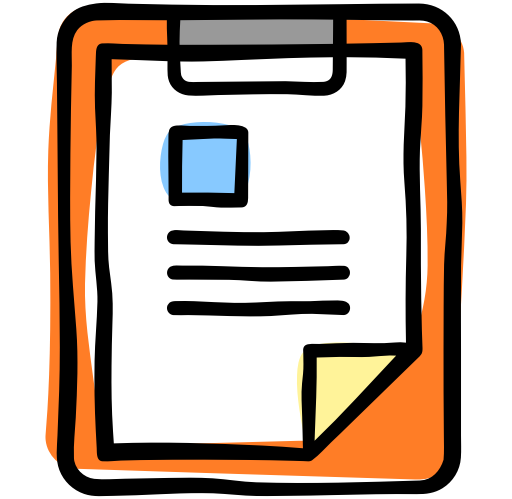What’s your learning style?
Article Date | 20 April, 2021
By Francesca Tommasini, Engagement Officer, Memo House, London
Edited by Stephanie Pena Garcia ,Velichka Hadzhieva (Engagement Team, Memo House, London)
Whether you do most of your studying from home or are just in need of some advice and would like to know more about different learning styles, here are some of the best ways to optimise your learning for better outcomes.
You learn new things every day. Indeed, learning is a continuous process and each individual will approach learning, memorising and consolidating new information in a different way due to individual differences.
The important question is: how can you learn new things and skills efficiently in order to optimise your time and learn in a faster way?
The best known and most common learning styles can be identified as the visual, auditory and kinaesthetic styles. In this article we will discuss each of the above and try to determine which style you may be using. Identifying your preferred learning style can be helpful when it comes to gaining new knowledge during your studies and in everyday life.
To gain a good understanding of the learning process, you should initially focus on the brain, its structure and how it works.
The brain is made up from tissues and nerves connected to the spinal cord. These nerves are responsible for each activity we are completing, from seeing to walking, and even understanding this article!
While we are learning something, our brain forms new connections and neurons. The more you learn, the more your brain will become ‘plastic’ and it will be easier to acquire more knowledge. The first thing you should do is find out what learning style is the best for you and will therefore allow you to achieve the best results possible.
Visual Learning
If you are a visual learner, it will be easier for you to learn new things by reading or observing pictures and diagrams. You would benefit from visualising and imagining a picture in your head of what you are learning. Your imagination plays a big part in this learning style as it can help you remember things by simply closing your eyes and picturing them in your mind.
You may find it helpful to memorise steps, information and new data by focusing on your creative imagination such as associating colours to words.
If you recognise yourself in this style, you should try to visualise things that you hear or that are being explained to you. Write down any key words and use colours to help your brain retain the information easily.
Top tips: Draw diagrams, pictures and tables, make your notes look well-organised. Remember, you learn new things mostly with your sight, so keep your notes eye-catching!

Auditory Learning
If you are an auditory learner, it means you will find it easier learning new things by hearing and listening.
If you recognise yourself in this style, it will be easier for you understand concepts and directions while you hear them instead of reading them. Reading information out loud can be very helpful for you as listening to your voice repeating the same concept many times can increase your retainment.
Top tip: An efficient technique would be recording yourself while you are explaining the subject you are learning. You can then listen to the recording as many times as you want and your brain will do the rest!

Kinaesthetic Learning
If you are a kinaesthetic/tactile learner then the best path to follow for you is to learn new things by touching and taking part in activities.
It is easier for you to memorise things with physical movement and you may need to be active rather than just acquire information passively. Gestures and activities may be a better option for you when it comes to your studies. You may find that it is difficult for you to sit still for a long time and you always find reasons to move around when you become bored.
Top tip: Some of the techniques you can use are walking around while studying, follow the text with your finger and take frequent short breaks during your studies. You can hold something while you are studying such as pencils or other objects, this can encourage you to remain focused.
Summary
Remember, there is no such thing such as a bad learner! But just a wrong method of study not suitable for you. Once you will find yours you can personalise it to your needs and preferences! Often, many individuals prefer learning new information by using a combination of the above-mentioned styles!
Learning styles quiz
When you have to memorise a list or a long sequence, what are you more likely to do?
- a. Write down the list or sequence to memorise it
- b. Repeat the sequence/list out loud
- c. Associating the list or long sequence to an experience or reference
How do you give directions to someone?
- a. Draw a map or assign places as references (eg. ‘Once you get to the bus stop… Turn left’)
- b. Use words and/or measurements (‘It is like 3 miles away…’)
- c. Close your eyes and image you are walking in that same direction. Use what you feel, see, smell in order to describe how to get there
When you study for an exam what is the best way for you to get ready?
- a. Read the book and review pictures
- b. Work with someone else and let him ask you the questions out loud
- c. Use hand gestures to study and create some materials that you can use with your own hands, such as cards ect.
What is the best way for you to learn new tasks?
- a. See someone who shows you how to do it
- b. Listen to someone explaining you how to complete the task with spoken instructions
- c. Learn new task on your own by actively practicing
While you are studying what do you think is your main distraction?
- a. A busy environment with many things happening around you
- b. A very loud environment with loud music or people talking
- c. A very bad and uncomfortable work station such as a too little desk, an uncomfortable chair, low light ect..
When you try to spell a word
- a. I visualize it in my mind
- b. I repeat it out loud
- c. I trace letter with my fingers
It’s more likely that I will remember…
- a. Things I saw
- b. Information I have heard
- c. Things I have experienced or lived through
- Majority of “A” answers → Visual
- Majority of “B” answers → Auditory
- Majority of “C” answers → Kinaesthetic





Most of the time selected and I selected B few times
It was good and wonderful for a test my knowledge and I selected most of my answers are A few of my answer is B
H2102574
Visual and auditory
Most of my answers are A and a few of my answers are B